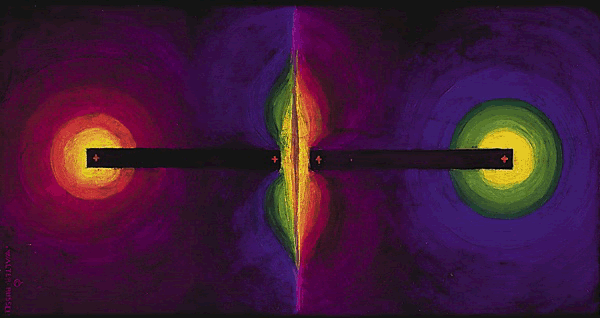Today (as opposed to yesterday ) we have a nice Batch of Info 
Hyperspeed Planets Are Hurtling Out of the Milky Way?
------------------------
Is a new explanation needed for plate tectonics? | TG Daily
--------------------------------
Giant 'UFO fragment' falls from the sky in Siberia - Telegraph




Hyperspeed Planets Are Hurtling Out of the Milky Way?
If you think life on Earth moves too fast, imagine being perched on a planet that's hurtling through space 400 times faster than our home world.
According to a new study, astronomers predict that "hypervelocity planets" are streaking through our Milky Way galaxy at up to 30 million miles (48 million kilometers) an hour—flung from the center of our galaxy by so-called gravitational slingshots.
Only subatomic particles such as cosmic rays are known to reach higher speeds in the Milky Way. (Related: "Lightning Creates Particle Accelerators Above Earth.")
So what would it be like on a lonely, fast-moving world? For one thing, the night sky would be a lot more dynamic, said study co-author Idan Ginsburg, an astronomy graduate student at Dartmouth College.
"If you were on the planet, from your perspective, you'd be moving so fast that in a relatively short time you'd see the galaxy just getting farther and farther away."
Ultimately, Ginsburg said, the planet would probably get kicked out of the galaxy.
"To where? That's a good question, but it would be a one-way ticket and a wild ride," he said.
"The problem is that you don't have a star or an external heat source, so your planet would get pretty cold." (Related: "Earth-Size 'Lone Wolf' Planets May Host Life.")
Planets Flung by Black Hole Slingshot
The new study was inspired by the discovery seven years ago of the first hypervelocity star, which is currently on a one-way trip out of our galaxy at a staggering 1.5 million miles (2.4 million kilometers) an hour.
Since then astronomers have spotted more than a dozen high-speed stars in the Milky Way.
Scientists believe such speedy stars originate in binary star systems, where pairs of stars orbit each other.
According to a new study, astronomers predict that "hypervelocity planets" are streaking through our Milky Way galaxy at up to 30 million miles (48 million kilometers) an hour—flung from the center of our galaxy by so-called gravitational slingshots.
Only subatomic particles such as cosmic rays are known to reach higher speeds in the Milky Way. (Related: "Lightning Creates Particle Accelerators Above Earth.")
So what would it be like on a lonely, fast-moving world? For one thing, the night sky would be a lot more dynamic, said study co-author Idan Ginsburg, an astronomy graduate student at Dartmouth College.
"If you were on the planet, from your perspective, you'd be moving so fast that in a relatively short time you'd see the galaxy just getting farther and farther away."
Ultimately, Ginsburg said, the planet would probably get kicked out of the galaxy.
"To where? That's a good question, but it would be a one-way ticket and a wild ride," he said.
"The problem is that you don't have a star or an external heat source, so your planet would get pretty cold." (Related: "Earth-Size 'Lone Wolf' Planets May Host Life.")
Planets Flung by Black Hole Slingshot
The new study was inspired by the discovery seven years ago of the first hypervelocity star, which is currently on a one-way trip out of our galaxy at a staggering 1.5 million miles (2.4 million kilometers) an hour.
Since then astronomers have spotted more than a dozen high-speed stars in the Milky Way.
Scientists believe such speedy stars originate in binary star systems, where pairs of stars orbit each other.
Is a new explanation needed for plate tectonics? | TG Daily
The Earth's wandering continents can't be fully explained by a layer of partially molten rock about 22 to 75 miles underground, NASA scientists say - something else must be contributing.
The outermost layer of Earth, the lithosphere, consists of the crust and an underlying layer of cool and rigid mantle, and is broken into numerous tectonic plates. Beneath the oceans, it's relatively thin, about 65 miles, but can be as thick as 200 miles beneath the continents.
Lying beneath the lithosphere is the asthenosphere, a layer of rock that is -very slowly - deforming and flowing. Heat in the Earth's core produced by the radioactive decay of elements warms the mantle rocks above, making them softer and causing them to convect.
Like the circulating blobs in a lava lamp, rock in the mantle rises where it is warmer than its surroundings, and sinks where it's cooler, moving the continental plates above.
But many details remain unexplained.
The outermost layer of Earth, the lithosphere, consists of the crust and an underlying layer of cool and rigid mantle, and is broken into numerous tectonic plates. Beneath the oceans, it's relatively thin, about 65 miles, but can be as thick as 200 miles beneath the continents.
Lying beneath the lithosphere is the asthenosphere, a layer of rock that is -very slowly - deforming and flowing. Heat in the Earth's core produced by the radioactive decay of elements warms the mantle rocks above, making them softer and causing them to convect.
Like the circulating blobs in a lava lamp, rock in the mantle rises where it is warmer than its surroundings, and sinks where it's cooler, moving the continental plates above.
But many details remain unexplained.
--------------------------------

Giant 'UFO fragment' falls from the sky in Siberia - Telegraph

The U-shaped object, resembling a silvery dome, is currently under inspection by Russian experts, after being covertly removed under cover of night from the possession of villagers who found it.
After discovering the device on Sunday, locals from the village of Otradnesnky had managed to drag the “UFO fragment” from the thick forest where it had fallen. They attached it onto a trailer and took it through the snow to their village, where local inspectors then examined it before alerting Moscow authorities.
After discovering the device on Sunday, locals from the village of Otradnesnky had managed to drag the “UFO fragment” from the thick forest where it had fallen. They attached it onto a trailer and took it through the snow to their village, where local inspectors then examined it before alerting Moscow authorities.




















 )
)
Comment